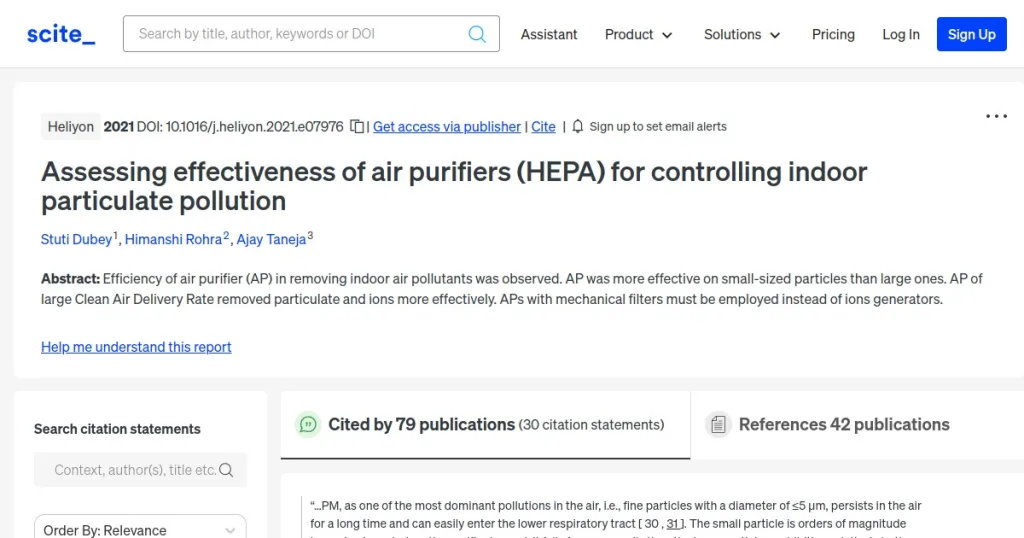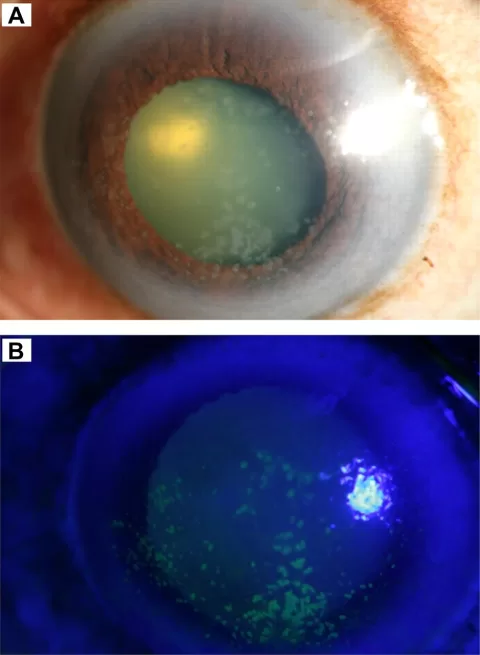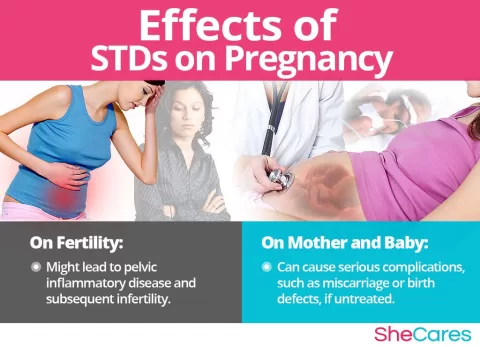HEPA purifiers have gained significant attention for their effectiveness in improving indoor air quality, particularly in settings like schools where respiratory viruses are a concern. A recent study found that while HEPA air purifiers can reduce the diversity of respiratory viruses, their impact on viral exposure was minimal. This raises important questions about the true effectiveness of HEPA purifiers in combating indoor pollution and respiratory illnesses. As we navigate the challenges of preventing viral spread, understanding the role of these air filtration systems in viral exposure reduction becomes essential. Ultimately, while HEPA purifiers contribute to cleaner air by filtering fine and coarse particulate matter, their efficiency against airborne pathogens remains uncertain without additional supportive measures.
When discussing indoor air filtration systems, it’s essential to consider high-efficiency particulate air (HEPA) filters and their role in maintaining a healthier environment. These devices are touted for their ability to trap pollutants and allergens, potentially improving overall air quality in closed spaces such as classrooms. However, recent analyses have shown that merely having these systems in place may not significantly lower the risk of contracting respiratory illnesses caused by viruses. In light of this, it’s crucial to explore complementary approaches to air purification, such as enhanced ventilation and humidity control, to further mitigate health risks in educational settings. As schools seek to improve air safety, understanding the comprehensive strategies that include both HEPA filters and other environmental adjustments will be key to effectively reducing exposure to respiratory pathogens.
Understanding HEPA Purifiers and Their Role in Air Filtration
High-Efficiency Particulate Air (HEPA) purifiers are designed to filter out a significant percentage of airborne particles, including dust, pollen, and even some viruses. In general, these purifiers are recognized for their ability to capture particles as small as 0.3 microns, which is why they are often used in medical and industrial environments to maintain cleaner air. While they can effectively improve indoor air quality by reducing particulate matter, their effectiveness against viral aerosols in settings like classrooms remains a topic of ongoing research.
The recent study mentioned in JAMA Network Open highlights an important aspect of HEPA air purifiers: while they can reduce fine and coarse particulate matter, their efficacy in mitigating viral exposure depends on multiple factors, including classroom occupancy and ventilation rates. In schools where these units are implemented, it’s crucial to consider not only the air filtration system but also the overall environmental conditions to ensure that the air quality improvements translate into better health outcomes for students.
Impact of Indoor Air Quality on Respiratory Viruses
Indoor air quality plays a pivotal role in the transmission of respiratory viruses, particularly in settings like schools where children spend prolonged amounts of time in close contact. The presence of pollutants and particulate matter can exacerbate asthma symptoms and may increase susceptibility to infections. Furthermore, research indicates that lower indoor humidity can contribute to higher viral survival rates, thereby increasing the likelihood of transmission. This has significant implications for health policies aimed at reducing respiratory illness prevalence among students.
As documented in the study, the unfortunate finding that HEPA purifiers did not correlate with a reduction in viral load suggests that simply installing air filtration systems may not be enough. Schools must consider comprehensive strategies that include improving overall ventilation and humidity levels to complement any air cleaning efforts. This multi-faceted approach can enhance indoor air quality, potentially lowering the risk of viral exposure and improving the health and comfort of students.
The Limitations of HEPA Purifiers in Reducing Viral Exposure
Despite their widely acclaimed benefits, HEPA air purifiers have been found to have limitations in reducing viral exposure, particularly in communal environments such as classrooms. The recent analysis of 200 elementary classrooms demonstrated that, while these purifiers can decrease the diversity of respiratory viruses, they do not significantly lower high viral exposure levels. Thus, schools may misplace their reliance on HEPA purifiers as the sole solution to protect students from respiratory illnesses triggered by viruses.
The study also highlighted the pressing need for additional interventions beyond air purifiers to effectively lower viral concentrations in school environments. Factors like classroom size, occupant behavior, and seasonal changes all influence the transmission dynamics of respiratory viruses. Therefore, educators and administrators should incorporate strategies such as regular ventilation breaks, improved humidity levels, and possibly CO2 monitoring to create a safer learning environment for children at risk of respiratory illnesses.
Importance of Combined Intervention Strategies
The findings from the analysis underscore the need for combined intervention strategies to manage respiratory virus transmission in schools. Implementing HEPA purifiers alone is not sufficient to ensure a healthy indoor environment. To combat high viral exposure, schools must adopt a holistic approach that includes improving ventilation, maintaining appropriate humidity levels, and potentially using CO2 as a marker for evaluating air quality. This multi-layered strategy could enhance the protection strategies already in place.
Moreover, addressing indoor climate conditions can be as crucial as installing HEPA air purifiers. Maintaining classroom humidity levels between 40% to 60% is not just a comfort factor; it could also play a significant role in reducing airborne virus survival rates. The combination of filtration systems, environmental controls, and educational initiatives about hygiene practices can significantly contribute to lowering the rate of respiratory illnesses among students.
Exploring Future Research Directions in Air Filtration
Future research should focus on further exploring the effectiveness of HEPA air purifiers in diverse indoor environments, especially in schools where the risk factors for viral transmission are multifaceted. Investigating the interplay between air filtration effectiveness, occupancy levels, and environmental conditions can help establish clearer guidelines for improving air quality in educational settings. Additionally, researchers can consider the benefits of integrating emerging technologies, such as smart sensors, to monitor and continuously optimize indoor air conditions.
Furthermore, studies aiming to assess the long-term health impacts of various air filtration systems on respiratory illnesses in children can provide valuable insights. While HEPA air purifiers may reduce particulate matter, understanding their effects on specific viral load reduction will guide schools in investing in the most effective technological solutions. Therefore, ongoing research must prioritize a comprehensive approach that blends air purification with environmental control measures to enhance indoor air quality.
The Role of Humidity in Controlling Viral Transmission
Humidity levels can significantly impact viral transmission in indoor environments. Studies indicate that maintaining humidity within a certain range can inhibit the survival of some respiratory viruses, thus playing a crucial role in reducing exposure risk. The findings from the analysis pointed out that low relative humidity is a risk factor for heightened viral exposure in classrooms. By addressing humidity, schools may find an effective method to complement their air filtration efforts.
Managing humidity not only enhances comfort but can also serve as a potential intervention to reduce the risk of virus transmission in classrooms. Experts have suggested that classroom humidity be maintained between 40% and 60%, as this range has shown to help lower exposure to respiratory viruses. This, in conjunction with HEPA filtration and improved ventilation, creates an environment conducive to the health and well-being of students and staff alike.
Significance of Air Quality in School Environments
Air quality significantly influences student health, learning, and overall well-being. Poor air quality can lead to or exacerbate respiratory conditions, increasing absenteeism and affecting academic performance. The analysis of HEPA air purifiers in schools serves as a reminder that while technological solutions can aid air quality, the environment’s holistic management is essential for long-term benefits. Achieving excellent air quality requires a combination of effective filtration, proper ventilation, and humidity control.
The importance of this issue cannot be overstated, especially in the context of current public health concerns regarding viral infections. Schools must prioritize air quality interventions to ensure a safe and conducive learning environment. Strategic investments in air purification technology should go hand in hand with education about respiratory health and best practices for maintaining healthy indoor environments.
Collaboration Between Schools and Health Authorities
Collaboration between schools and health authorities is paramount in combating the challenges posed by respiratory viruses in educational settings. By partnering with public health experts, schools can better understand the impact of air quality on student health and develop more effective measures to protect children from respiratory illnesses. Such collaborations can also facilitate the sharing of best practices and resources that can enhance classroom environments.
Moreover, health authorities can provide essential guidance on implementing multi-faceted strategies that include air filtration, ventilation improvement, and humidity regulation. By fostering a synergy between education, public health, and environmental science, schools can create a proactive approach that not only aims to reduce viral exposure but also promotes a healthier atmosphere for learning.
Educating Students on Air Quality and Hygiene Practices
An essential component of improving school environments goes beyond physical interventions; educating students about air quality and hygiene practices is vital. Awareness initiatives can empower students to take responsibility for their health and well-being by understanding the importance of clean air and practicing good hygiene, such as regular handwashing and utilizing masks during high-transmission periods.
Furthermore, fostering an environment where students are encouraged to participate in discussions about their health can lead to improved adherence to preventive measures. Schools can incorporate air quality education into their curricula, teaching children how their choices impact their environment. This educational approach can enhance the effectiveness of air purification efforts and lead to a culture of health mindfulness within school communities.
Frequently Asked Questions
How effective are HEPA air purifiers in improving indoor air quality?
HEPA air purifiers are highly effective at removing fine and coarse particulate matter from the air, contributing significantly to improved indoor air quality. However, their effectiveness against viral aerosols is less certain and can depend on various factors such as occupancy, ventilation, and environmental conditions.
Can HEPA purifiers reduce the risk of respiratory viruses in schools?
While HEPA purifiers can decrease particulate matter, recent studies suggest they may not significantly reduce viral exposure in schools. Though they were associated with a modest reduction in viral diversity, they did not lower the overall viral load, indicating that additional interventions may be needed.
What factors influence the effectiveness of HEPA purifiers against viral exposure?
The effectiveness of HEPA purifiers in reducing viral exposure is influenced by factors such as classroom size, ventilation systems, indoor climate, and relative humidity levels. These elements play a crucial role in determining how well the purifiers can mitigate airborne pathogens.
What role does humidity play in the effectiveness of HEPA air purifiers for viral exposure?
Studies have shown that lower humidity levels can increase viral exposure, suggesting that maintaining classroom humidity between 40% and 60% may enhance the effectiveness of HEPA air purifiers. Proper humidity management, along with air filtration, can help reduce the risk of respiratory viruses.
Are there any limitations to the effectiveness of HEPA air purifiers in controlling viral transmissions?
Yes, while HEPA air purifiers help improve air quality by filtering out particulate matter, they have not been shown to significantly reduce viral transmission in clinical settings. Factors like classroom configuration and environmental conditions need to be considered, and complementary strategies may be necessary.
What alternative measures can schools take alongside HEPA air purifiers for better air quality?
In addition to using HEPA air purifiers, schools can improve ventilation, manage humidity levels, and implement regular cleaning routines to enhance air quality and reduce the risk of respiratory virus exposure in classrooms.
Is there evidence supporting the use of HEPA air purifiers in reducing illness-related school absences?
Recent studies indicated that while HEPA air purifiers reduced viral diversity, they did not correlate with lower illness-related school absences. This suggests that relying solely on HEPA filtration may not be sufficient to combat health issues like high viral exposure.
How do HEPA air purifiers compare to other air filtration methods for viral exposure reduction?
HEPA air purifiers are known for their high filtration efficiency, particularly for particles. However, their effectiveness against viruses is limited compared to methods that also address ventilation and humidity, emphasizing the need for a multi-faceted approach to air quality.
What do studies say about the cost-effectiveness of HEPA air purifiers in schools?
While HEPA air purifiers provide substantial benefits in eliminating particulate matter from the air, recent analyses indicate their cost-effectiveness in reducing viral exposure is questionable. This raises the importance of considering diverse air quality interventions rather than relying on HEPA units alone.
What future research is needed regarding HEPA air purifiers in school settings?
Future research should focus on multi-faceted environmental interventions that include humidity management, improved ventilation strategies, and the impact of HEPA filters on overall health outcomes, including respiratory virus exposure among students.
| Key Points | Details |
|---|---|
| Study Overview | A randomized clinical trial analyzed HEPA purifiers in 200 US elementary classrooms. |
| Main Findings | HEPA purifiers linked to reduced viral diversity but not reduction in viral exposure. |
| Research Parameters | Study conducted from Sept 2015 to June 2020 with focus on asthma symptoms and viral exposure. |
| Viral Detection | 98.5% of samples contained viruses; rhinovirus was most prevalent. |
| HEPA Purifiers Effectiveness | No significant decrease in overall viral load; possible influence from environmental factors. |
| Environmental Factors | Low humidity and particulate matter linked to increased viral exposure. |
| Conclusion from Authors | Calls for further studies on interventions to improve air quality and humidity. |
Summary
HEPA purifiers effectiveness is still uncertain in clinical settings, as they may not significantly reduce viral exposure in elementary classrooms. While a recent study indicated a modest reduction in viral diversity, the overall viral load remained unchanged. This highlights the need for further research into various environmental interventions that can improve air quality and potentially reduce respiratory virus exposure among students.
The content provided on this blog (e.g., symptom descriptions, health tips, or general advice) is for informational purposes only and is not a substitute for professional medical advice, diagnosis, or treatment. Always seek the guidance of your physician or other qualified healthcare provider with any questions you may have regarding a medical condition. Never disregard professional medical advice or delay seeking it because of something you have read on this website. If you believe you may have a medical emergency, call your doctor or emergency services immediately. Reliance on any information provided by this blog is solely at your own risk.








